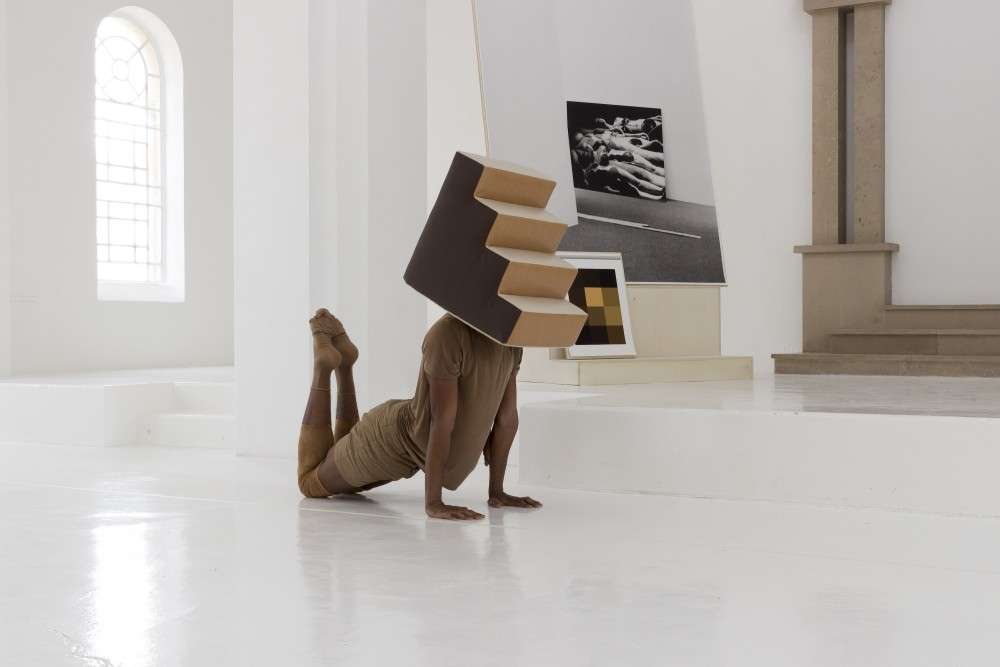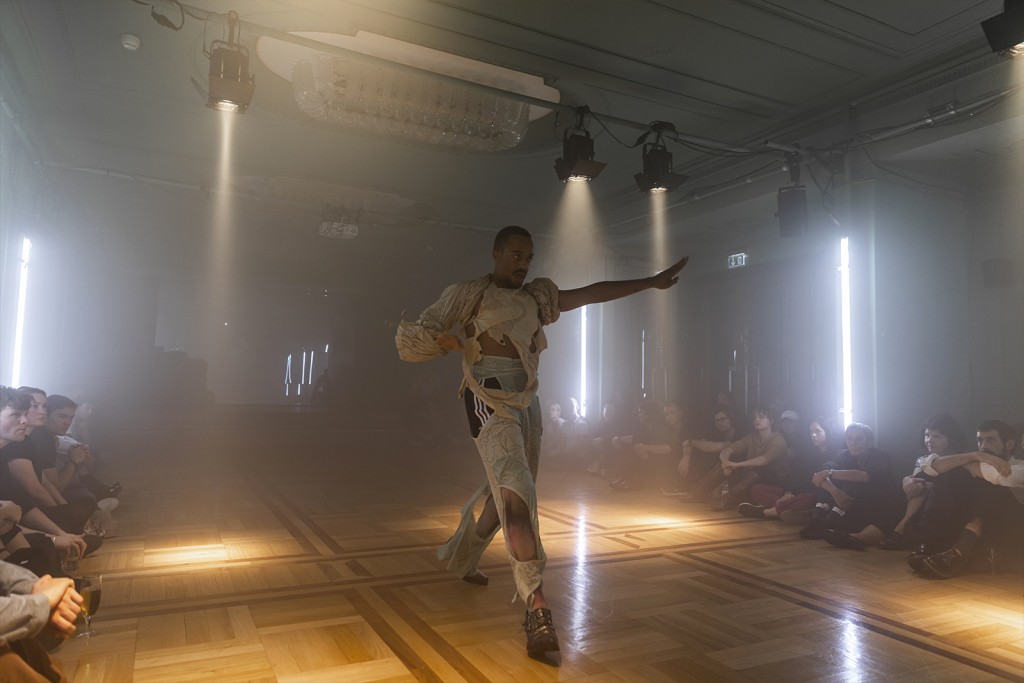Michael Portnoy & Bob Dilan, Soy Bomb, Grammy Awards, 1998
Tag: dance
JEANNE BALIBAR – Femme Maison
Jimmy Robert, Descendances du nu, 2016. Performance view: Centre d’art contemporain – la synagogue de Delme, France, 2016. Photo by O.H. Dancy. Courtesy of the artist and Tanya Leighton, Berlin.
INTERVIEW By Harry Burke
JIMMY ROBERT ON THE BODY, SPACE, AND POWER
“The words emerge from her body without her realizing it, as if she were being visited by the memory of a language long forsaken,” wrote Marguerite Duras in her 1990 short novel, Summer Rain. The notion of the body as a vehicle of language permeates the inquisitive practice of Jimmy Robert. Born in Guadeloupe, and based in Berlin, Robert — who works in performance, photography, installation, and film — uses the body to ask questions about how spaces are constructed, and what it means to see and be seen. His artworks are often formed through processes of translation and transition, as he constructs meaning out of the differences that exist between various sites, texts, and media. A rigorous attention to collaboration runs throughout his oeuvre, and extends even to his relationship with his artistic godmothers: Duras, Yvonne Rainer, and other feminist figures who have brought visibility to issues of desire and movement while problematizing how power operates within the visual sphere. Earlier this year, Robert staged a performance titled Joie noire at KW Institute for Contemporary Art, Berlin, and is currently participating in the 2019 Chicago Architecture Biennial (until January 2020). To encounter Robert’s work is to understand that art can be judged as much for what it does as for what it is: viewership is a provocative and participatory process. Can you describe your work for the current Chicago Architecture Biennial?The title of the installation and performance, Descendances du nu, is a play on the French words for descending and legacy — its starting point is Marcel Duchamp’s 1912 painting Nude Descending a Staircase, No. 2. I first performed the piece in a former synagogue in France. I was thinking about what it means to bring a body like mine into an art space with strong religious connotations while reflecting on Duchamp as a patriarchal figure — Sherrie Levine, Elaine Sturtevant, and Louise Lawler have all appropriated his work — and trying to locate myself between matriarchal and patriarchal figures. I wore a headpiece that looks like a staircase — I was like an architectural anomaly, or symbiosis. In Chicago, other performers are performing the piece on a staircase in a big cultural center from the late-19th century. It’s a neo-baroque extravaganza accompanied by a sound piece by Ain Bailey, and a text by Élisabeth Lebovici who writes about cabaret, Josephine Baker, camp, and the notion of the pedestal.
Sènsa performed by Nkisi and Paul Maheke, Co-commissioned by Abrons Arts Center and Red bull arts New York for the Performa 19 Biennial, Img: Frank Sperling, 2019
no apocalypse not now by Ariel Efraim Ashbel and friends, By and with: Jessica Gadani, Cassie Augusta Jørgensen, Tatiana Saphir, and Sarah Thom, 2019
Excerpt from a conversation between Tarren Johnson and Wojciech Kosma at The Performance
Agency Studio, Berlin, July 8, 2019
[…]
W: The only thing I thought about when driving here, was how wonderful it would be if the Settlers Lounge didn’t have any context. I could see it in a theater, a musical venue or in the street. So-mehow it felt like the content was preceding the context, because it didn’t rely too heavily on where it was happening.
T: The original structure of the Settlers Lounge was going to be a box of two way mirrors instead of the final steel framed structure. The atmosphere was shaped by the original design. Even though you could see through the partitions of the space, there was an indication of separation. For me it was really important to find the core and now I will build on it as the performance series continues and moves to different spaces. I really enjoy working in store fronts. I think there is an interesting engagement with the people that are walking by and watching us rehearse over a period of time. And a lot of people ended up coming by for the show with the speaker outside as an invitation.


